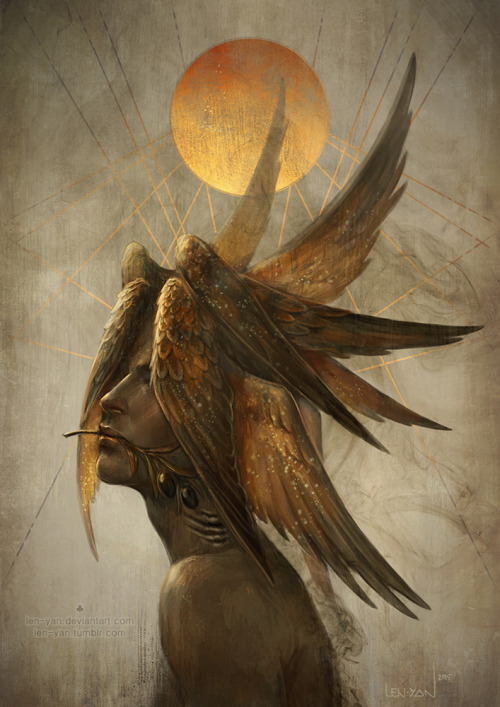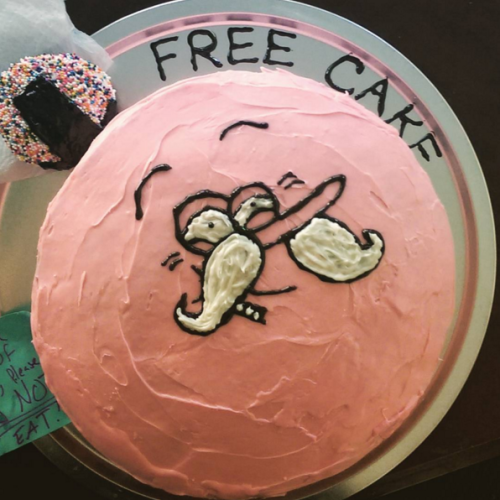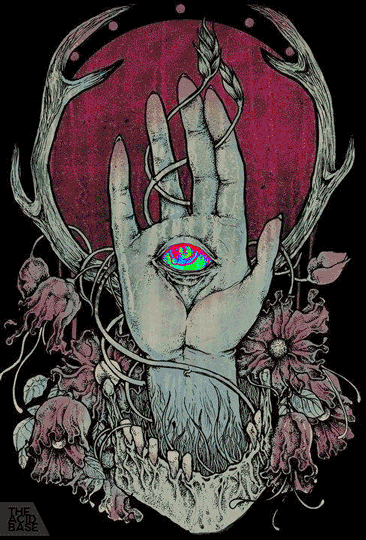5 Insane Things Hiding Just Outside Of Human Perception

And then there are the so-called “forbidden colors” called red-green and blue-yellow, because scientists suck at naming things. We know they exist, but our retinas piss all over the very idea by crudely approximating them to their base colors when sending the signal to the brain. In an experiment conducted in 1983, researchers figured out they could make volunteers actually see these colors using specifically constructed striped images where one half of an eye’s retinal cells could only see one color while the other saw the other, basically overloading the eye until it went “screw it” and unleashed the forbidden hues.
The volunteers saw colors they had not seen before, but had no words for what they were looking at. It sort of broke their brains for a minute.
5 Insane Things Hiding Just Outside Of Human Perception
More Posts from Sweetteadivination-blog and Others

ESPERANCE
[noun]
hope or expectation.
Etymology: from Old French, from Vulgar Latin sperantia (unattested), from Latin spērāre, “to hope”, from spēs, “hope”.
[Magdalena Pagowska - Hope]

Love it baby

Astrophyllite (a.k.a. Astro, a.k.a. Phyll) Still working on her design. I have many WIPs of her but I dont want to post them.. lol.


Here’s Tektite!! Learn more about her here on dA~
What’s Up for February 2016?
Five morning planets, Comet Catalina passes Polaris and icy Uranus and icy Vesta meet near Valentine’s Day.

February mornings feature Mercury, Venus, Saturn, Mars and Jupiter. The last time this five-planet dawn lineup happened was in 2005. The planets are easy to distinguish when you use the moon as your guide. Details on viewing HERE.
If you miss all five planets this month, you’ll be able to see them again in August’s sunset sky.

Last month, Comet Catalina’s curved dust tail and straight ion tail were visible in binoculars and telescopes near two galaxies that are close to the handle of the Big Dipper. Early this month, the comet nears Polaris, the North Star. It should be visible all month long for northern hemisphere observers.

There will be more opportunities to photograph Comet Catalina paired with other objects this month. It passes the faint spiral galaxy IC 342 and a pretty planetary nebula named NGC 1501 between Feb. 10 – 29. For binocular viewers, the magnitude 6 comet pairs up with a pretty string of stars, known as Kemble’s Cascade, on Feb. 24.

Finally, through binoculars, you should be able to pick out Vesta and Uranus near one another this month. You can use the moon as a guide on Feb. 12, and the cornerstone and the corner stars of Pegasus all month long.

For more information about What’s Up in the February sky, watch our monthly video HERE.
Make sure to follow us on Tumblr for your regular dose of space: http://nasa.tumblr.com
Free cake! Free cake!

Don’t miss a jolly good episode of Regular Show tonight at 6pm/5c!
(🍰: Camylle Carrizales)
Sweet art

This kills me.
The vast majority of toilet paper is either used to wipe the part of your body that smells or the part of your body that smells.
-
 bribearoh reblogged this · 10 months ago
bribearoh reblogged this · 10 months ago -
 bribearoh reblogged this · 1 year ago
bribearoh reblogged this · 1 year ago -
 trevorfindsthestrals reblogged this · 4 years ago
trevorfindsthestrals reblogged this · 4 years ago -
 chubby-kathleen-patterson liked this · 6 years ago
chubby-kathleen-patterson liked this · 6 years ago -
 eristaios reblogged this · 7 years ago
eristaios reblogged this · 7 years ago -
 osirisgrayson96 liked this · 8 years ago
osirisgrayson96 liked this · 8 years ago -
 coffee-et-biscotti reblogged this · 8 years ago
coffee-et-biscotti reblogged this · 8 years ago -
 jhenne-bean liked this · 8 years ago
jhenne-bean liked this · 8 years ago -
 acasualkiller reblogged this · 8 years ago
acasualkiller reblogged this · 8 years ago -
 acasualkiller liked this · 8 years ago
acasualkiller liked this · 8 years ago -
 kaitosano reblogged this · 8 years ago
kaitosano reblogged this · 8 years ago -
 ggdave liked this · 8 years ago
ggdave liked this · 8 years ago -
 femmefatalefillefatale liked this · 8 years ago
femmefatalefillefatale liked this · 8 years ago -
 quantumlockedstone reblogged this · 8 years ago
quantumlockedstone reblogged this · 8 years ago -
 sleepyartprince reblogged this · 8 years ago
sleepyartprince reblogged this · 8 years ago -
 woodygaythrie reblogged this · 8 years ago
woodygaythrie reblogged this · 8 years ago -
 aloniall liked this · 8 years ago
aloniall liked this · 8 years ago -
 jottingprosaist liked this · 8 years ago
jottingprosaist liked this · 8 years ago -
 whatwhatwotter reblogged this · 8 years ago
whatwhatwotter reblogged this · 8 years ago -
 softhoodies liked this · 8 years ago
softhoodies liked this · 8 years ago -
 disappointed-lemon reblogged this · 8 years ago
disappointed-lemon reblogged this · 8 years ago -
 echnolon reblogged this · 8 years ago
echnolon reblogged this · 8 years ago -
 chillin-like-lavellan liked this · 8 years ago
chillin-like-lavellan liked this · 8 years ago -
 utot-atbp liked this · 8 years ago
utot-atbp liked this · 8 years ago -
 unclaimed-username reblogged this · 8 years ago
unclaimed-username reblogged this · 8 years ago -
 i-have-12-percent-of-a-plan liked this · 8 years ago
i-have-12-percent-of-a-plan liked this · 8 years ago -
 spirit-sparkle liked this · 8 years ago
spirit-sparkle liked this · 8 years ago -
 sketch-dino412 liked this · 8 years ago
sketch-dino412 liked this · 8 years ago -
 zeiatsuggestion reblogged this · 8 years ago
zeiatsuggestion reblogged this · 8 years ago -
 cosmogol-999 liked this · 8 years ago
cosmogol-999 liked this · 8 years ago -
 isthereasharkinhere liked this · 8 years ago
isthereasharkinhere liked this · 8 years ago -
 boingoalive1988 liked this · 8 years ago
boingoalive1988 liked this · 8 years ago -
 thrayonlosa-inactive liked this · 8 years ago
thrayonlosa-inactive liked this · 8 years ago -
 elli-psis liked this · 8 years ago
elli-psis liked this · 8 years ago -
 princehop liked this · 8 years ago
princehop liked this · 8 years ago -
 upsidedizzy liked this · 8 years ago
upsidedizzy liked this · 8 years ago -
 clippy reblogged this · 8 years ago
clippy reblogged this · 8 years ago -
 clippy liked this · 8 years ago
clippy liked this · 8 years ago -
 mandrakebrew reblogged this · 8 years ago
mandrakebrew reblogged this · 8 years ago -
 downthepub reblogged this · 8 years ago
downthepub reblogged this · 8 years ago -
 season-one-alana reblogged this · 8 years ago
season-one-alana reblogged this · 8 years ago -
 lavendcrs liked this · 8 years ago
lavendcrs liked this · 8 years ago -
 jahmocha liked this · 8 years ago
jahmocha liked this · 8 years ago -
 jessica-problems liked this · 8 years ago
jessica-problems liked this · 8 years ago -
 prukyea liked this · 8 years ago
prukyea liked this · 8 years ago -
 sparksoffandommagic reblogged this · 8 years ago
sparksoffandommagic reblogged this · 8 years ago -
 amyattempts reblogged this · 8 years ago
amyattempts reblogged this · 8 years ago
